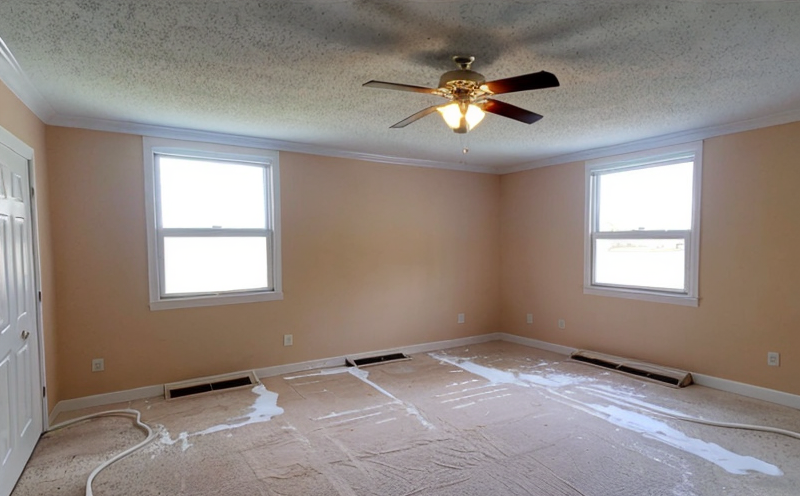ASTM D5930 Thermal Conductivity of Plastics by Transient Method
The ASTM D5930 standard outlines a transient method to measure the thermal conductivity of plastics. This non-destructive test evaluates how efficiently materials transfer heat, which is essential in additive manufacturing and 3D printing processes where thermal stability is paramount.
Thermal conductivity (k) is defined as the amount of heat transferred through a unit area per unit time for every one degree temperature difference across that material. This property is critical for designing parts with specific heat dissipation or insulation requirements. In additive manufacturing, understanding thermal conductivity helps in selecting materials that can withstand processing temperatures and maintain performance under operational conditions.
The transient method used in ASTM D5930 involves measuring the temperature rise of a small sample as it absorbs thermal energy from a laser source. This approach allows for precise measurement without damaging or altering the sample's structure, making it suitable for evaluating complex geometries and composite materials commonly found in 3D printing.
For plastics used in additive manufacturing, the transient method provides insights into how different additives, fillers, or processing conditions affect thermal performance. This information is invaluable for optimizing material formulations to meet specific application demands such as high-temperature stability, improved electrical insulation, or enhanced mechanical properties.
The test setup typically includes a sample holder, a laser source, and a temperature measurement system. The sample is placed in the holder, exposed to the laser pulse, and its temperature rise monitored using thermocouples or infrared sensors. The data collected during this process is then analyzed to calculate thermal conductivity according to ASTM D5930.
Understanding thermal conductivity through ASTM D5930 is crucial for additive manufacturing because it influences several key aspects:
- Processing Efficiency: Materials with lower thermal conductivity may require more energy to achieve uniform temperature distribution, affecting build time and cost.
- Mechanical Properties: Higher thermal conductivity can lead to faster cooling rates during the printing process, impacting internal stresses and residual strains in the final part.
- Product Performance: Knowledge of thermal properties ensures that finished products perform optimally under intended operating conditions, especially in high-temperature or temperature fluctuating environments.
Benefits
The benefits of ASTM D5930 thermal conductivity testing extend beyond mere compliance; they offer significant advantages to manufacturers and researchers working with plastics in additive manufacturing:
Enhanced Material Selection: By understanding the thermal behavior of different plastic types, engineers can select materials that best suit their production needs. This selection process is crucial for achieving desired properties like durability, flexibility, or electrical insulation.
Informed Design Decisions: Knowing how plastics behave thermally helps in designing parts that can withstand various environmental conditions without degradation. This knowledge also aids in predicting potential failure modes and optimizing design parameters to enhance product longevity.
Cost Optimization: Identifying the most cost-effective materials through thermal testing reduces unnecessary expenses associated with trial-and-error approaches during material selection. Additionally, it minimizes wasted resources by ensuring that selected materials perform as expected in real-world applications.
Regulatory Compliance: Many industries have strict regulations regarding product safety and performance based on thermal properties. Ensuring compliance through accurate testing ensures that products meet industry standards and pass quality audits efficiently.
Customer Impact and Satisfaction
The implementation of ASTM D5930 thermal conductivity tests has a direct positive impact on customer satisfaction within the additive manufacturing sector. By providing detailed data on material performance, these tests enable customers to make informed choices about their projects:
Quality Assurance: Customers can rely on consistent quality from suppliers who adhere to rigorous testing protocols like ASTM D5930. This consistency leads to fewer defects and improved product reliability.
Custom Solutions: With access to comprehensive thermal conductivity data, customers can request custom materials tailored specifically for their unique applications. This capability enhances innovation while meeting specific performance criteria.
Long-Term Savings: By investing in thorough testing upfront, customers avoid costly rework and recalls later on. The insights gained from ASTM D5930 tests help prevent issues that could arise due to incorrect material choice or improper processing conditions.
International Acceptance and Recognition
The ASTM D5930 standard enjoys widespread acceptance across various countries, reflecting its importance in the global additive manufacturing community:
Australia: Compliance with ASTM standards is recognized by regulatory bodies in Australia, ensuring that imported materials meet local quality and safety requirements.
New Zealand: Similar to Australia, New Zealand regulatory frameworks acknowledge international standards like ASTM D5930 for their accuracy and reliability.
United Kingdom: The UK's robust quality assurance systems incorporate ASTM D5930 into certification processes for additive manufacturing parts. This integration fosters confidence among end-users about the integrity of these products.
European Union: As part of EU directives on product safety and performance, compliance with ASTM standards is often a requirement for market entry. This ensures that all EU member states have access to consistent testing methods across borders.





